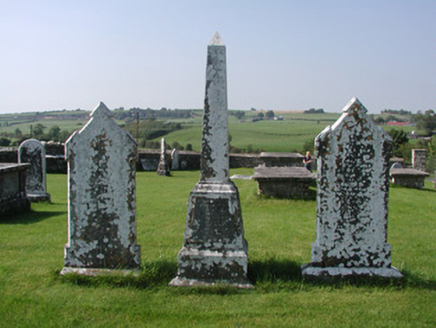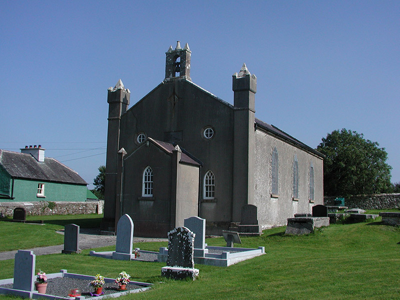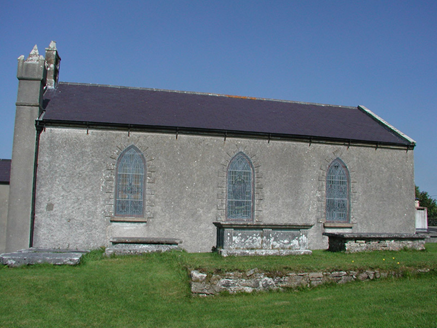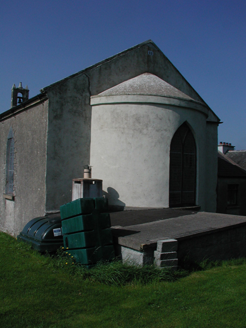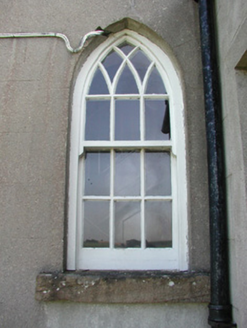Survey Data
Reg No
14939011
Rating
Regional
Categories of Special Interest
Architectural, Artistic, Historical, Social, Technical
Original Use
Church/chapel
In Use As
Church/chapel
Date
1780 - 1790
Coordinates
214124, 198257
Date Recorded
08/09/2004
Date Updated
--/--/--
Description
Detached Church of Ireland church, built in 1786 with a loan from the Board of First Fruits and assistance from Jonathan Darby, with apse and entrance porch and graveyard to site. The pulpit, pray table and stained glass windows were all taken from Ettagh Church. Pitched slate roof with terracotta ridge tiles, cast-iron rainwater goods, sandstone coping and a sandstone bellcote. Roughcast rendered walls to side elevations with sandstone eaves course. Ruled and lined rendered wall to front elevation with sandstone plinth course, a sandstone date plaque and sandstone diamond panel. Clasping buttresses flanking front elevation with pyramidal pinnacles. Pointed-arched window openings with stucco surrounds, sandstone sills and stained glass windows. Pointed arched window openings to front elevation with sandstone sills and timber intersecting tracery windows. Oculi with sandstone surrounds. Square-headed door opening to porch with timber battened door. Graveyard to site with variety of grave markers. Site enclosed behind rubble wall and accessed through wrought-iron gates supported by gate piers.
Appraisal
The plaque on Aghancon Church records that it was built in 1786 at the joint expense of Dr. Thomas Pery, Lord Bishop of Killaloe and by Jonathan Darby of Leap Castle with the aid of a loan from the Board of First Fruits. Located on an elevated site with views across the valley to Leap Castle, Aghancon Church has many notable features including the sandstone bellcote and the unusual pyramidal finials. The pulpit, prayer table and decorative stained glass windows were all removed from Ettagh Church, near Birr. The local school, Aghancon Church and the former rectory were built in close proximity and played an important role within the local community. The stained glass windows, plaque and carved sandstone add an artistic interest to the site.
